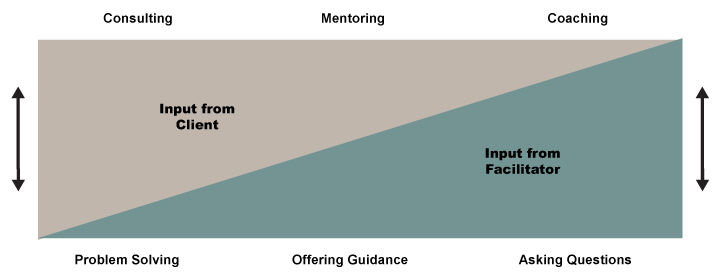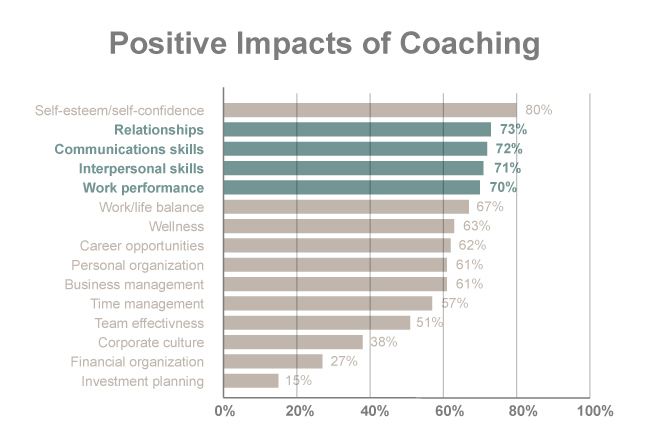What is coaching?
As I said elsewhere, my clients often look to me provide solutions or even save them, but this is not the role of the coach. However challenging the situation there is no-one more capable of resolving your situation than you. The coach’s role is to pose questions that help you clarify what you want to achieve, where you start and what’s critical to success.
Coaching can often be confused with mentoring and there is some overlap but mentoring includes advice from the mentor as much as input from the client. The two are shown below in a visual manner, including consulting:
All have their merits, but while input from others is valuable, it can be disempowering and result in solutions that are right for others but not sustainable for you.
 Source: Leadership Continuum Theory. Tannenbaum and Schmidt (1958)
Source: Leadership Continuum Theory. Tannenbaum and Schmidt (1958)
Historically, coaches have often been engaged because a client feels they are under-performing. That is still the case but more and more coaches are being engaged to help with high-performance.
How does coaching work?
The methodology is simple, as all good things are. Commonly each session follows four stages:
1. What do you want? What really is important and at the heart of the matter; not what others might think or focus on?
2. Where are you now? How far are you in achieving your goal, what has worked in the past and what are your obstacles, values and beliefs?
3. What could you do? What are your options, what would others do, and what if you had no constraints?
4. What will you do? Which options will you commit to, when and exactly how?
Typically, we might have an introductory session and thereafter arrange six fortnightly sessions and review from there. However, there are no rules, in some cases, one session is enough, in others I have offered long-term support over six months.
Again, the client describes what they would like to achieve and what efforts have been made so far. The coach questions and listens and questions again, helping the client work through their own thought-processes and priorities and facilitating their decision-making.
Sometimes this is straightforward, but often it can be complicated with the need to unearth and overcome several limiting beliefs. There may also be the need to put aside what the client thinks they ought to do.
For example, when motivating staff, there are hundreds of celebrated management books on this topic and a consultant or trainer might propose following 'best practice'. In a coaching session, you look at what has worked for you in the past, what your strengths are, what you have observed and what resonates with you, what would be authentic and sustainable. Management theory may come into this, but it may not.
Again, the approach is simple but the benefits are material. The client increases their momentum and confidence but also becomes more self-aware in regards to what they want and how best to achieve it.
What is the impact?
Firstly, you achieve your goal(s) sooner and more effectively than were you to approach them alone. There are also much broader benefits; often clients experience improved motivation, peace of mind or clarity, increased empowerment, ownership and conviction. The relationship can also assist with ongoing discipline, personal accountability and learning.
How can the benefits be measured? In some cases, this is straightforward. A client may wish to hit their sales target for the year or a business owner may reach a certain profit level. Others, however, have more intangible objectives: to be more confident, more effective, more proactive - all equally valid, but harder to quantify. In some cases, clients come with an initial objective that changes materially over time once they work with a coach, and some come with no objective at all except a need for change.
A quantitative view on the impact can be seen in the results below from the International Coaching Federation, the primary governing body for coaches:
 Source: Price Waterhouse Int Coach Fed, Glode Study (2009)
Source: Price Waterhouse Int Coach Fed, Glode Study (2009) Source: ICF Global Coaching Client Study (2009)
Source: ICF Global Coaching Client Study (2009)